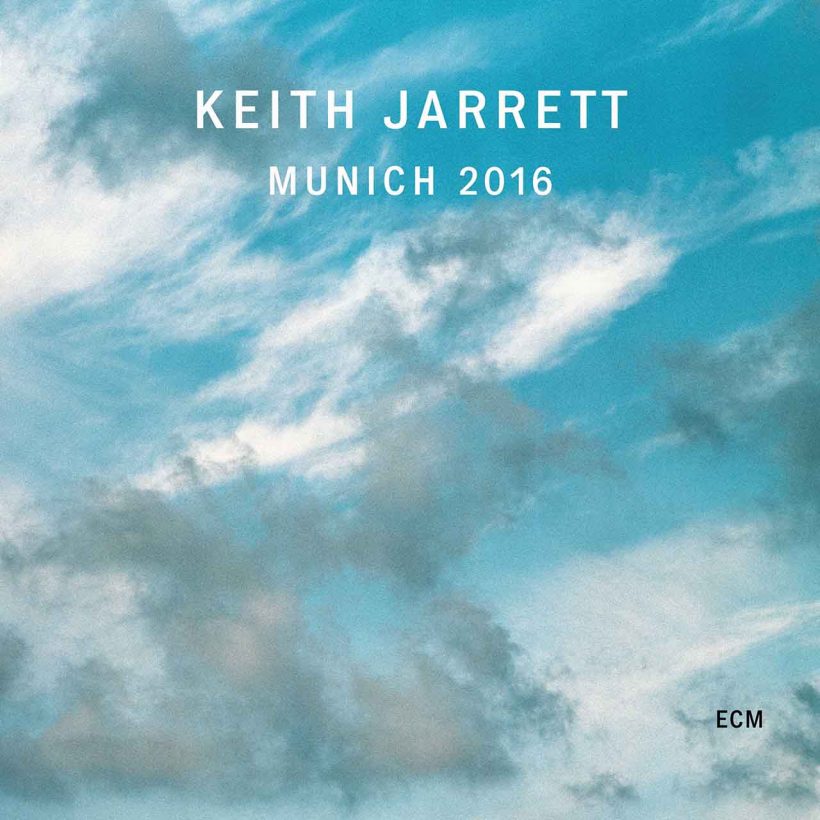‘Munich 2016’: Keith Jarrett At The Peak Of His Powers
Up there with his legendary ‘The Köln Concert,’ ‘Munich 2016’ finds Keith Jarrett drawing inspiration from the moment and creating a transcendent high.

Germany has long been a happy hunting ground for Keith Jarrett. It was there where he recorded his most popular album, The Köln Concert, in 1975, which established the then 29-year-old Pennsylvanian pianist as one of contemporary jazz’s leading lights. And, of course, Germany – more specifically, Munich – is the home of the ECM record label, for whom Jarrett is a talismanic figure and has enjoyed a fruitful 48-year association. It’s fitting, then, that the piano maestro’s latest opus, a live double-album called Munich 2016, captures him performing in ECM’s hometown – and even more apt that the performance’s release coincides with the label’s 50th-anniversary celebrations.
Listen to Munich 2016 on Apple Music and Spotify.
A cultural phenomenon
Before Keith Jarrett came along, solo piano albums – especially live ones – in the jazz world were few and far between. He recorded his first, a studio album called Facing You, for ECM in November 1971, but it was three years later when the label released a recording of Jarrett performing alone on stage (Solo Concerts: Bremen/Lausanne). The pianist’s unique ability in the art of extemporization led ECM to further capture him in concert, resulting in the sensational The Köln Concert. Somehow, that album struck a chord with the public and became a cultural phenomenon. It went on to sell over three million copies, thrusting both Jarrett and ECM’s names into the music mainstream.
Though, in commercial terms, Jarrett hasn’t been able to replicate The Köln Concert’s success, many of his subsequent live albums – namely Sun Bear Concerts, Multitude Of Angels and La Fenice – have all proved to be musical triumphs that have enhanced the pianist’s reputation as a master of spontaneous composition. Now, the magnificent Munich 2016 can be added to that list.
Music flows in a stream of consciousness
The starting point for every Jarrett solo recital is the musical equivalent of a blank canvas. There is no preparation, no forethought, no planning. Creation begins the moment he sits at the piano and starts moving his fingers, allowing the music to flow out of him in a stream of consciousness.
And so it is with Munich 2016, a suite of 12 improvisations recorded on the evening of Saturday, July 16, 2016. “Part I” is fiercely virtuosic. It begins with dissonant notes which are woven into a frenetic tapestry brimming with energy. Riding a maelstrom of thundering polyrhythms, Jarrett maintains a fever-pitch intensity for a full, breathtaking 16 minutes.
“Part II,” by contrast, is more measured: a stark but stately meditation with shades of 20th-century European composers Shostakovich and Hindemith in its musical DNA. It’s characterized by an inherent tension and sense of suspense, which dissolves when we hear “Part III,” a gentle pastoral ballad flecked with bittersweet gospel inflections (we also hear Jarrett, as is his habit, singing out the melody as he plays).
At the peak of his powers
“Part IV” chugs along thanks to locomotive ostinato left-hand rhythms with a hint of the blues, while on “Part V” the mood softens. Jarrett has arrived at a sweeter place, where his music is more lyrical and flows with delicate right-hand pianissimos.
From the celestial sunshine of “Part V,” “Part VI” begins with long, warbling right-hand tremolos. The piece, though slightly subdued, is a shimmering reverie, growing tenser as it progresses. “Part VII” is febrile by comparison: a short, abruptly-ending study in perpetual motion where there’s a contrapuntal conversation between the pianist’s left and right hands.
The music is more relaxed on “Part VIII,” a ruminative nocturne on which Jarrett displays a supremely delicate touch and shows his sensitivity as a musician.
“Part VIX,” with its rolling left-hand, quasi boogie-woogie accompaniment, is down-to-earth and steeped in the blues, though the longer “Part X,” is more ethereal by comparison and has an explorative quality.
“Part XI” is a slow-moving melodic meditation packed with rich harmonic detail. Its rhythmic gracefulness gives way to the more playful and technically-demanding “Part XII,” a scherzo-like piece defined by rapid patterns of notes and which ends as dramatically as it began.
A transcendent high
Jarrett’s encore sees him return to older, more familiar music and finds him freshening up, in his own inimitable way, a trio of well-worn jazz standards. The wistful “Answer Me My Love” is beautifully rendered; exquisite, too, is “It’s A Lonesome Old Town,” though the performance is darker and more melancholic. A touching rendition of Harold Arlen’s immortal “Somewhere Over The Rainbow” concludes the Munich concert on a transcendent high.
No single Keith Jarrett live album is the same, but they’re all special. As Munich 2016 so clearly shows, every one of the pianist’s solo concerts is a unique, never-to-be-repeated performance. The audience never knows what it’s going to hear. There is, however, always one certainty: they’ll get to witness a master musician at the peak of his powers. And that’s what Munich 2016 guarantees. As immersive concert experiences go, it’s right up there with The Köln Concert.












